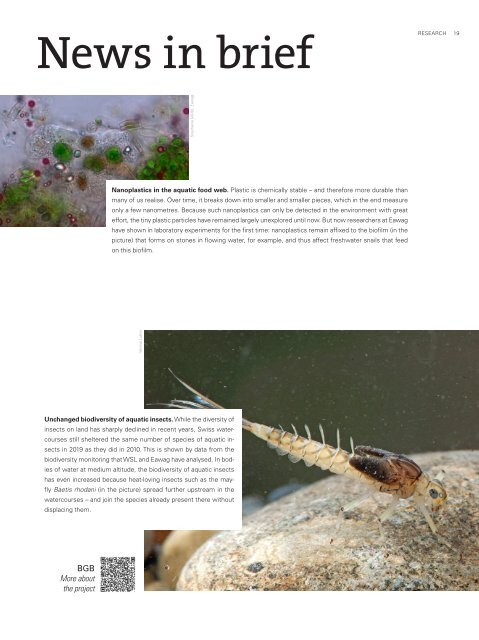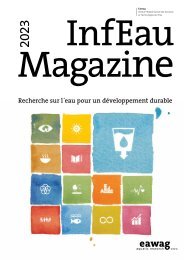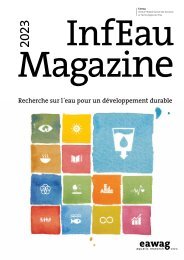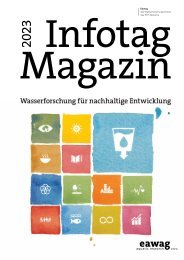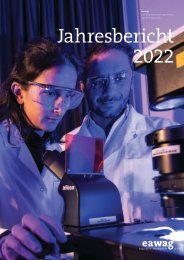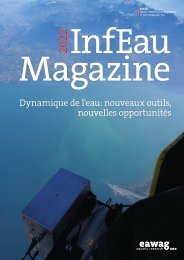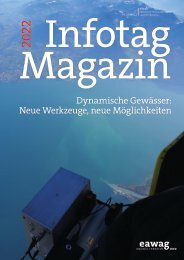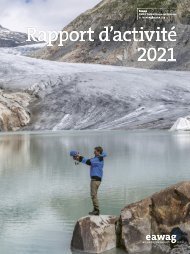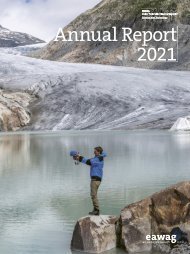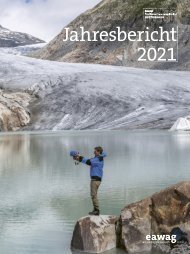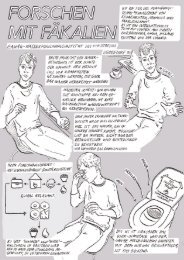Eawag Annual Report 2022
As the aquatic research institute of the ETH Domain, our research is in service of society. You can see this for yourself in our Annual Report. The annual compact review highlights the most relevant research results of the past year and shows how they were developed.
As the aquatic research institute of the ETH Domain, our research is in service of society. You can see this for yourself in our Annual Report. The annual compact review highlights the most relevant research results of the past year and shows how they were developed.
Create successful ePaper yourself
Turn your PDF publications into a flip-book with our unique Google optimized e-Paper software.
News in brief<br />
RESEARCH<br />
19<br />
Stephanie Merbt, <strong>Eawag</strong><br />
Nanoplastics in the aquatic food web. Plastic is chemically stable – and therefore more durable than<br />
many of us realise. Over time, it breaks down into smaller and smaller pieces, which in the end measure<br />
only a few nanometres. Because such nanoplastics can only be detected in the environment with great<br />
effort, the tiny plastic particles have remained largely unexplored until now. But now researchers at <strong>Eawag</strong><br />
have shown in laboratory experiments for the first time: nanoplastics remain affixed to the biofilm (in the<br />
picture) that forms on stones in flowing water, for example, and thus affect freshwater snails that feed<br />
on this biofilm.<br />
Verena Lubini<br />
Unchanged biodiversity of aquatic insects. While the diversity of<br />
insects on land has sharply declined in recent years, Swiss watercourses<br />
still sheltered the same number of species of aquatic insects<br />
in 2019 as they did in 2010. This is shown by data from the<br />
biodiversity monitoring that WSL and <strong>Eawag</strong> have analysed. In bodies<br />
of water at medium altitude, the biodiversity of aquatic insects<br />
has even increa sed because heat-loving insects such as the mayfly<br />
Baetis rhodani (in the picture) spread further upstream in the<br />
watercourses – and join the species already present there without<br />
displacing them.<br />
BGB<br />
More about<br />
the project


